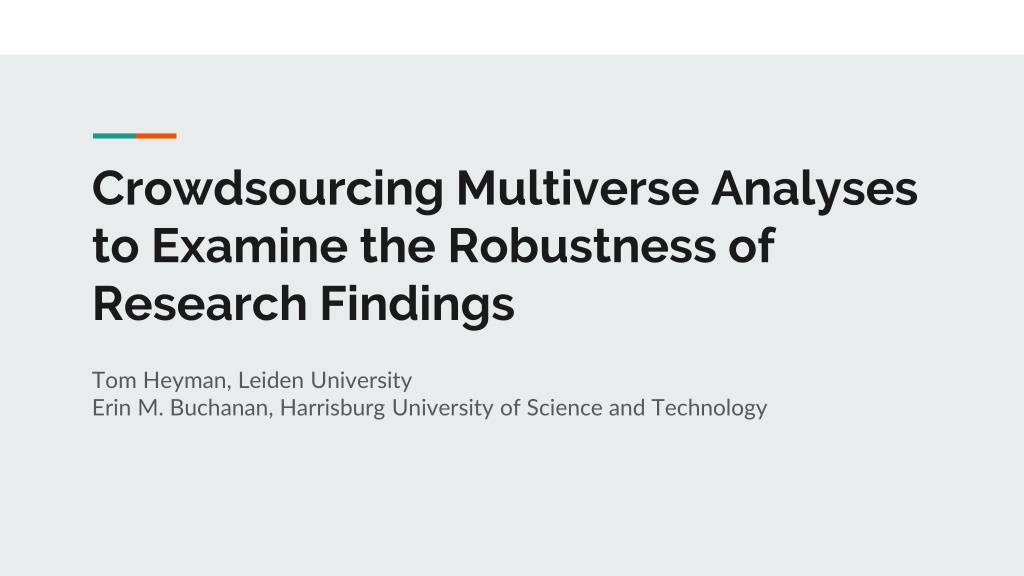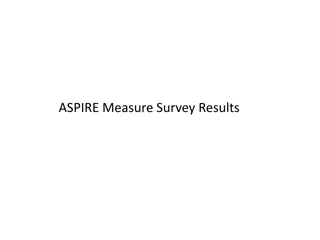
Multiverse Analyses in Crowdsourcing Research
Explore the concept of multiverse analyses, their application in crowdsourcing research, and the process of examining the robustness of research findings. Learn about a crowdsourced semantic priming study and the steps involved in conducting robust research analyses.
Download Presentation

Please find below an Image/Link to download the presentation.
The content on the website is provided AS IS for your information and personal use only. It may not be sold, licensed, or shared on other websites without obtaining consent from the author. If you encounter any issues during the download, it is possible that the publisher has removed the file from their server.
You are allowed to download the files provided on this website for personal or commercial use, subject to the condition that they are used lawfully. All files are the property of their respective owners.
The content on the website is provided AS IS for your information and personal use only. It may not be sold, licensed, or shared on other websites without obtaining consent from the author.
E N D
Presentation Transcript
Crowdsourcing Multiverse Analyses to Examine the Robustness of Research Findings Tom Heyman, Leiden University Erin M. Buchanan, Harrisburg University of Science and Technology
Multiverse Analyses - An analysis in which a researcher may: perform all analyses across the whole set of alternatively processed data sets corresponding to a large set of reasonable scenarios (Steegen et al., 2016) - Allows for the study of the robustness of the effect of analytic choices on the research results
PSA007 Example: Semantic Priming - - A large scale crowdsourced semantic priming study (ongoing) Effect of interest: Unrelated word-pair trials versus Related word-pair trials - Tree - nurse (unrelated) - Doctor - nurse (related)
Step 1: Research Question - Clearly outline the substantive research question - - Is there a semantic priming effect? Are there differences in priming across languages?
Step 2: Expert selection Identify experts in the field via: - - - Literature search Personal network Snowball procedure
Step 3: Elicit analysis pathways Identify analysis degrees of freedom through: - Survey of experts from step 2 - Use corresponding author meta-data to email experts Inspection of the articles from the literature search in step 2 - Meta-analytic coding of pathways considered -
Step 3: Elicit analysis pathways - - - - Data cleaning (elimination of individual trials, participants, outliers, etc.) Dependent variable (z-scored, transformed, subtracted response latencies) Statistical Analysis (t-test, multilevel model, meta-analysis) Inference decision criteria
Step 4: Combining pathways - - Process the outcomes from step 3 Evaluate which pathways can be sensibly combined - Outliers + all analyses - Subtracted scores only on item level analyses (not multilevel models)
Step 5: Pathway validation - Experts are (again) asked to rate importance and suitability of pathways - Pathways are given weights that can be used to rank / select Inferior pathways can be removed or receive less weight Depending on feasibility one could select only the top X most suitable pathways Outcome is the final multiverse of pathways to be applied to (newly collected) data - - -
Thanks and join us! - We are actively looking for collaborators to help coordinate this project. If interested, email buchananlab@gmail.com. Questions? - -


